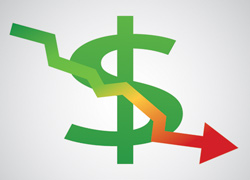USD came under pressure versus its main peers during Monday’s trading sessions, illustrated by the dollar index (DXY) trading down -0.29% on the day. At the same time, the leading US equity indices gave up their gains during the New York session as investors await a decision on the Pandemic Relief Bill.
Investors are also concerned that, despite the coronavirus vaccine rollout beginning on Monday, businesses in the USA might need to close if the infection rate and deaths continue to climb at the unprecedented levels witnessed last week. At 8 pm UK time the SPX 500 was trading flat on the day.
USD/CHF oscillated close to the first level of support (S1) down -0.31% and trading at levels not seen since January 2015 illustrating the depths of the collapse of the US dollar versus the Swiss franc, often regarded as a safe-haven currency. The fall year-to-date is now -8.70%. USD/JPY recovered to trade close to flat, after falling below S2 during the London-European session. At 8 pm UK time the currency pair traded at 104.05, down -4.20% in 2020.
Predictably the story of sterling during the day’s trading session followed a pattern determined by the Brexit negotiations. The rise of GBP began to fade during the New York session as the supposed breakthrough announced on Sunday evening began to fall apart on closer inspection.
The EU negotiating team stressed (once again) that if the UK wants to enjoy continued single market access, then it must comply with all the demands of a level playing field. If the UK refuses this invite, then it will be subject to quotas and tariffs. The question arises; if the UK accepts single market access on European Union terms, then what has been the point in the UK Brexit? The UK public, however they voted in the 2016 referendum, will have been duped.
At 8:30 pm UK time GBP/USD traded up 0.79%. The pair often termed “cable” oscillated in a wide range during the day, reaching a high of 1.3334 and breaching R2, before surrendering to R1. EUR/GBP, possibly a better indication of how sterling is trading versus its peers, also initially fell as positive Brexit news emerged, before giving up its gains as the EU expanded its rationale over a potential trade deal.
EUR/GBP traded down -0.49% and after falling through S2 the cross-currency pair traded between the daily pivot point and S1 in the late stages of the New York session. The euro registered gains versus several peers during the day’s sessions, EUR/USD posted 0.29% gains during the sessions and is up 8.72% year-to-date.
Medium to high impact calendar events to monitor during Tuesday, December 15’s sessions
The ONS will publish the latest statistics on UK unemployment and employment in the London session, and the forecast is for an improvement to 30K jobs getting added to the number employed in November.
Average earnings on an annual basis are forecast to rise by 2.2%, indicating an improvement for UK workers. However, the prediction is for the unemployment rate to rise to 5.1%, the highest percentage rate for several years.
Various CPI figures for European nations get published during the London-European session; these figures are unlikely to move the price of the euro versus its peers.
In the New York session, USA data involves manufacturing and industrial production, import prices, export prices and manufacturing sales. A combination of these readings could illustrate the strength of the US economic recovery during the pandemic. The price of yen versus its main peers may come under scrutiny during the Sydney and Asian sessions on Tuesday evening, when Japan’s authorities publish the latest Japanese data for exports, imports, and the trade balance.


